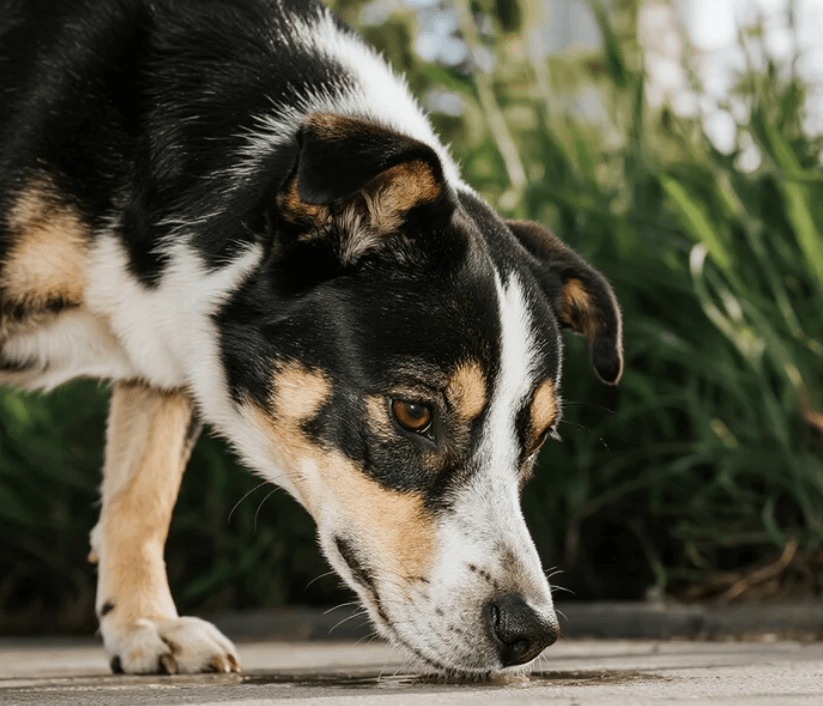Can Abused Dogs Be Trained?

Understanding the Psychology of Abused Dogs
Abused dogs often display distinct behavioral patterns resulting from their traumatic experiences.
Unlike typical behavioral issues in dogs, abuse-related trauma requires specialized understanding and approaches. These dogs may exhibit:
- Hyper-vigilance and constant scanning of their environment
- Abnormal startle responses to sudden movements or noises
- Food aggression or hoarding behaviors
- Submissive urination when approached
- Fear-based aggression or complete withdrawal
Research from the American Veterinary Medical Association shows that abused dogs typically require 3-6 months of consistent rehabilitation before showing significant behavioral improvements.
The process requires patience, consistency, and often professional guidance.
The Science Behind Canine Trauma and Recovery
Neurological studies reveal that abused dogs experience actual changes in brain structure and chemistry.
The amygdala (the fear center of the brain) becomes enlarged, while the prefrontal cortex (responsible for decision-making) shows decreased activity.
This explains why abused dogs often react instinctively rather than thoughtfully.
However, canine neuroplasticity - the brain's ability to form new neural connections - means recovery is possible.
A 2022 study published in the Journal of Veterinary Behavior demonstrated that with proper rehabilitation techniques:
- 84% of abused dogs showed significant behavioral improvement
- 67% achieved what researchers classified as "complete rehabilitation"
- Improvements were maintained long-term with consistent reinforcement
Step-by-Step Rehabilitation Process
Phase 1: Building Trust (Weeks 1-4)
The foundation of all abused dog training is establishing trust. Key techniques include:
- Non-threatening body language (avoid direct eye contact, approach from the side)
- Using high-value treats to create positive associations
- Establishing predictable routines for feeding, walks, and interaction
- Respecting the dog's space and allowing them to initiate contact
How BarkTok Can Help with Rehabilitation
Training an abused dog requires expert guidance, which is where the BarkTok App becomes invaluable. Our AI-powered platform offers:
- Personalized training plans based on your dog's specific trauma responses
- Step-by-step video tutorials demonstrating proper rehabilitation techniques
- Real-time feedback on your training methods through video analysis
- 24/7 access to professional dog behaviorists for guidance
- Progress tracking to monitor your dog's improvement over time
With BarkTok, you get the equivalent of a professional dog rehabilitation specialist guiding you through every step of the process, right from your smartphone.
Phase 2: Basic Obedience (Weeks 5-12)
Once trust is established, begin with basic commands using positive reinforcement only:
- Start with simple "watch me" exercises to build focus
- Progress to "sit" and "down" commands
- Use extremely high-value rewards (small pieces of chicken or cheese)
- Keep sessions short (3-5 minutes) and always end on a positive note
Phase 3: Socialization and Advanced Training (Months 3-6)
This final phase focuses on:
- Controlled exposure to triggers in a safe environment
- Building confidence through agility exercises
- Socialization with trusted dogs and people
- Addressing any remaining specific behavioral issues
Common Challenges and Solutions
Fear Aggression
Many abused dogs display fear-based aggression. Counter-conditioning techniques involve:
- Identifying triggers at a distance where the dog notices but doesn't react
- Pairing the trigger with high-value treats
- Gradually decreasing the distance over multiple sessions
Separation Anxiety
Common in dogs abandoned or kept in isolation:
- Practice short departures and gradually increase duration
- Provide special toys available only when alone
- Use pheromone diffusers to create a calming environment
Success Stories: Rehabilitation in Action
Case studies demonstrate what's possible with proper rehabilitation:
Max's Story
A 3-year-old Labrador rescued from a puppy mill, Max displayed severe fear of human contact. After 5 months of consistent rehabilitation using positive reinforcement techniques, Max now:
- Greets strangers with confidence
- Participates in therapy dog work
- Competes in basic obedience trials
Bella's Transformation
An abused Pit Bull mix with severe food aggression, Bella's rehabilitation included:
- Hand-feeding exercises to rebuild trust
- Gradual introduction to other dogs during mealtimes
- Positive reinforcement for calm behavior around food
After 6 months, Bella could eat peacefully alongside other dogs and no longer guarded resources.
Professional Help vs. DIY Training
While many aspects of rehabilitation can be done at home, professional help is recommended when:
- The dog shows aggression that results in bites
- Progress stalls for more than 2-3 weeks
- The owner feels overwhelmed or unsafe
Organizations like the Certification Council for Professional Dog Trainers (CCPDT) can help locate qualified behaviorists specializing in abused dogs.
Long-Term Maintenance and Setback Prevention
Rehabilitation is an ongoing process. Maintain progress by:
- Continuing positive reinforcement training
- Providing mental stimulation through puzzle toys and games
- Monitoring for signs of regression and addressing them immediately
- Keeping a consistent routine and environment
Remember that abused dogs may always have certain sensitivities, but with proper management, they can live happy, well-adjusted lives.
Conclusion: Hope for Abused Dogs
While rehabilitating an abused dog requires significant time and patience, the results are profoundly rewarding. With science-based techniques, consistency, and often professional guidance (whether in-person or through innovative tools like the BarkTok App), even severely traumatized dogs can learn to trust again and develop positive behaviors.
The key takeaways for successfully training an abused dog are:
- Progress happens gradually - celebrate small victories
- Every dog's timeline is different - avoid comparisons
- Setbacks are normal - they don't erase progress
- Professional support is valuable - don't hesitate to seek help
- The bond formed through rehabilitation is extraordinary
For those embarking on this challenging but meaningful journey, remember that your patience and compassion are transforming a life. The abused dog you see today has the potential to become a confident, loving companion with your dedicated effort.
 Related Articles
Related Articles





